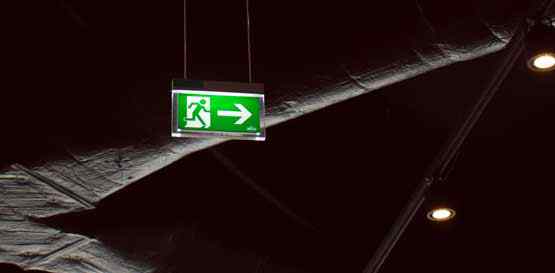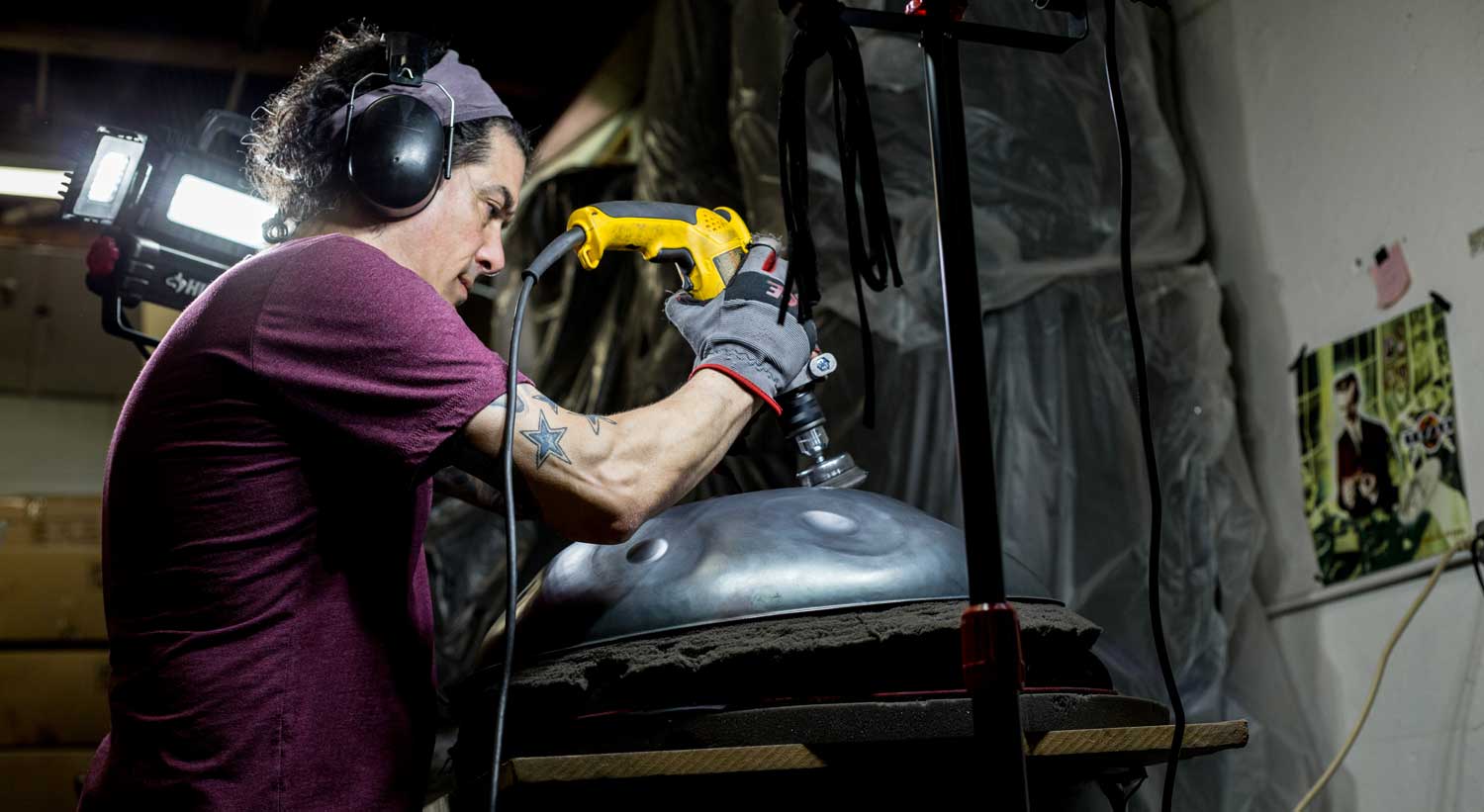Importance of Emergency Lights
Beyond the obvious back up advantage why do you need emergency lights? This is a question that may be in the minds of people who want to understand whether the emergency light is an option or a compulsion. After all, candles are far cheaper and we have been using them for donkey’s years.

A possible logical answer to that question would differ depending on the person asking that question. For one thing, people have gotten wiser and times have changed hugely. They no longer want to remain donkeys for more future years. If you are individual living in a small independent house with family and within limited means, candles could be a cheaper option and Emergency lighting –a luxury. But even that is debatable because when a fire rages and the house is dark, you might not get time to light that candle anyway. Alternately, if you are living in a clustered society, a building or a high rise, emergency lights may be the only lifesaving commodity in a crisis situation. Fire accidents have become very frequent of late and crowded cities and localities have become death traps.
Furthermore, if you are an architect, a builder or a developer the Building code mandates certain compulsory exigency criteria and you could be legally charged if you do not go by that code. So for you, emergency lights are most definitely mandatory.
The future of the Global Emergency Lighting market looks good with opportunities in the Residential, Commercial as well as Industry. The reasons for this are twofold. On the one hand many lives have been lost in fire accidents due to non-visibility in dark of smoky conditions. Lessons have been learnt the hard way and people are becoming more mindful of exigency safeguards. On the other hand those who still want to be penny wise and pound foolish, have to deal with tougher laws and negligence penalties which could be severe.
Importance of Emergency Lighting
It provides illumination allowing people to see clearly, avoid obstacles and move confidently to the nearest exit in a crisis. Emergency ballasts allow an existing light fixture to operate in emergency battery mode during a power outage.
Increasing adoption of safety regulations by governments is expected to create conducive environment for growth of the global emergency lighting market, as new buildings are required to be equipped with emergency lights as per the new standards. These factors are expected to further accelerate growth of emergency lighting batteries market.
UTILITY VALUE OF EMERGENCY LIGHTS
An emergency exit light is a clear, safe way to get out of a structure or building. It provides fast exit in case of emergency such as a fire. First responders may also use it as a way into the building so it is very important to make sure they are ready to use at all times.
All emergency lights are not created equal. Standard thermoplastic fixtures are appropriate for everyday office use, while explosion proof emergency lights are built to operate in environments containing flammable gas, vapour, or dust. There is an emergency light for almost every type of facility, but Special Use Emergency Lights are designed for the most unique applications.
All emergency lights are not created equal. Standard thermoplastic fixtures are appropriate for everyday office use, while explosion proof emergency lights are built to operate in environments containing flammable gas, vapour, or dust. There is an emergency light for almost every type of facility, but Special Use Emergency Lights are designed for the most unique applications.
EXTENDED RUN-TIME EMERGENCY LIGHT: Standard emergency lights of whatever type are designed to provide illumination for a minimum of 90 minutes, in the case of power loss. This specification has been determined by officials to provide enough time for building evacuation in all normal circumstances. However, what if the circumstances are not normal; would 90 minutes be enough in all cases?
Not all power loss situations are such that there are additional hazards associated with the loss of power. While some can be associated with severe weather or a major accident, this isn’t necessarily true in all cases. However, abandoning operating equipment, because of a power loss, can in some cases create a more serious hazard. In those cases, 90 minutes may not be enough time to shut everything down before evacuating the facility. Extended run-time emergency lights also provide an added level of safety for your personnel, in these situations where standard 90 minute emergency lights may not provide adequate safety.
A place where longer run time may be needed for emergency lights is in cases where power losses are frequent. It generally takes 24 hours for the batteries in an emergency light to fully charge. Once charged, they are designed to provide enough power to illuminate the unit for 90 minutes.
The Importance of Emergency Lighting | Lighting
Thinking about emergencies before they happen is difficult. Every building needs plans in place but knowing the plan is fit for purpose before the emergency happens is critical.

Emergency lighting is the backup system created for when an emergency cuts the main power supply for example, during a fire or a power cut. In this situation, a backup power system comes online to power emergency lights, exit signs, and other necessary functions to help people out of a building. The lights minimise danger to the buildings occupants who could struggle to see danger or find the exit.
In this article, we will answer the following questions:
What Does An Emergency Lighting System Need?
There are many components to a functional emergency lighting system. These include:
Each building has its own essential requirements based on the uses and layout of the building. For example, some buildings need a plan to allow the safeguarding of disabled people which is separate from the current door system. In this example, providing lighting to denote where the egress plan will take place.
What Are The Legal Requirements Of Emergency Lighting?
Emergency lighting systems are defined under the British Standards Institutions BS 5266-1:2016. The full standard is available to purchase through the BSI website but the main points are as follows:
What Is The Best Emergency System?
The best emergency systems meet all the requirements based on the age of the building you inhabit or the building you plan to create. These legal requirements are designed to reduce the risk of catastrophe.
Acceptable risks exist – you can only put so many systems in place but an emergency lighting system helps highlight all the other systems in an emergency.
Emergency lighting helps all other emergency systems in the BS 5266-1:2016 work. Developing a system that keeps people safe is important but unless your occupants can use those systems in a catastrophe it is unusable.
Considering the individual needs of the occupants are vital. Disabled people have various access concerns that are necessary. As stairs aren’t climbable by those in wheelchairs or using other mobility equipment, outlining lift chairs or other systems becomes a priority for building designs that will host people with those needs.
Emergency lighting should have a coherent colour scheme too. People who are partially blind or otherwise have had damage to their sight should an accident occur can follow brightly coloured lights better than they can read. The standard green exit sign is a universally understood symbol that is taught to everyone and should be maintained.
Are Emergency Lights Always On?
Emergency lights can be running either only in an emergency or as an ongoing system that will remain active in an emergency. There are benefits to both.
If emergency signs aren’t lit when other lights are still on, it can show quickly that the emergency system has not been put into place. However, building redundancy into the system can help if that first lighting system ever fails and it shows emergency exits even in a non-emergency.
This can be especially useful for developing solutions that cater to neurodivergent people, for example those who suffer from autism or anxiety and would like to prepare for an emergency before it takes place.
For most businesses, a fire exit plan will be provided as part of training, but when catering to visitors it is important to factor in their needs as part of considering what choice will be made.
Standby lighting is often installed to reduce panic in an emergency. These lights are normal lights that have been built onto the backup power supply also, so light visibility remains high in an emergency. This is great as many lights can be turned off and hallways can remain visibly lit.
How Can I Maintain An Emergency Lighting System?
Managing an emergency lighting system is best left to trained professionals. In this case, it’s important to find a company that can maintain pre-existing systems whilst also being able to expand the system as the BS 5266-1:2016 expands.
Airius handles all of the documentation that your company needs to maintain its electrical components. This includes Electrical Install Condition Reports (EICR) and Portable Appliance Testing (PAT) if some of your backup power supply or lighting systems are portable.
These documents help manage your legal reputation. If an occupant starts legal actions against you, our reports make sure that you have done your due diligence and are not on the line for any damages.
We are also insured up to £10m in public liability, meaning that our lighting systems will never cause you any problems should an issue ever occur.
If you want to learn more about emergency lighting, and if your current system is adequate for your building, please contact us at 01202 554 200 or email us at
The Importance of Emergency Lighting -
An emergency light is a direct current, battery-packed lighting device that automatically switches on when a primary power supply fails in a building. It is usually placed on the emergency exit to provide a clear path during an evacuation.

How Emergency Light Works?
When emergency incidents like fire and earthquake hit a building and cause a power outage, emergency lighting will immediately activate the battery. Afterward, it will utilize to charge up the emergency light up to 3 hours. It is enough time to ensure that everyone inside the building will find their way out safely. Once the regular power is turned on, the emergency lights will then recharge until such time it will be ready to use again.
Emergency lights are usually placed above exit signs, fire safety equipment, exit doors, and escape routes and stairways.
Why is Emergency Lighting Important?
Emergency lights are essential assets in giving effective fire safety in your area. For instance, when a fire occurs, and the power supply goes off, it is reasonable to panic. Since thick smoke fills up the area, finding your way out of the building without proper lighting can be difficult. However, with the use of an emergency light, it will guide you safely and effectively. Next, we need to consider as well the obstruction in the evacuation route. Still, without proper vision during emergencies, this can cause severe injury and may block the evacuation area. That is why emergency is significant because it will illuminate the way and prevent these obstacles so that any probable injuries can be avoided.
Kinds of Emergency Lighting Systems
There are different kinds of emergency lighting to choose from:
· Escape Route Lighting
This lighting is also known as bulkhead lighting and helps to provide the safest and fastest route to a fire exit. These lights are usually found in the ceiling so they can illuminate the way, helping you to avoid any obstacles.
· Open Area Emergency Lighting
This type of emergency lighting is also known in some countries as anti-panic lighting. The primary purpose of this emergency lighting is to reduce panic stress by providing more illumination for the tenants in the building to reach an escape route and exit safely. Open area emergency lights are placed in public areas of the building so that when building occupants are evacuating, there is enough light.
· High-Risk Task Area Lighting
The high-risk task area lighting is required for factories and other industrial buildings. Workers performing high-risk tasks like operating machinery or working with tools should be able to adequately see what they are doing to allow for a safe shut down of the equipment. Without this lighting, it can be hazardous when the power goes out. The worker would be unable to see correctly, and this can pose a threat of injury to themselves or others.
· Standby Lighting
This type of lighting can supply adequate lighting to ensure that normal activities can continue in case of a power cut. An emergency generator usually provides standby lighting.
SummarySince most of these emergency lights are required by law, you must have an effective system in place to illuminate your escape routes. You can talk to Preventive Fire Company to provide Lake Park emergency lighting requirements of your premises.


![31 Best IPTV Services for FireStick, Android TV, PC [Dec 2021]](https://www.lampsofbible.com/storage/upload/Images/_1639646173_nXrO23JGnM.jpg)





